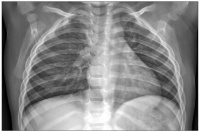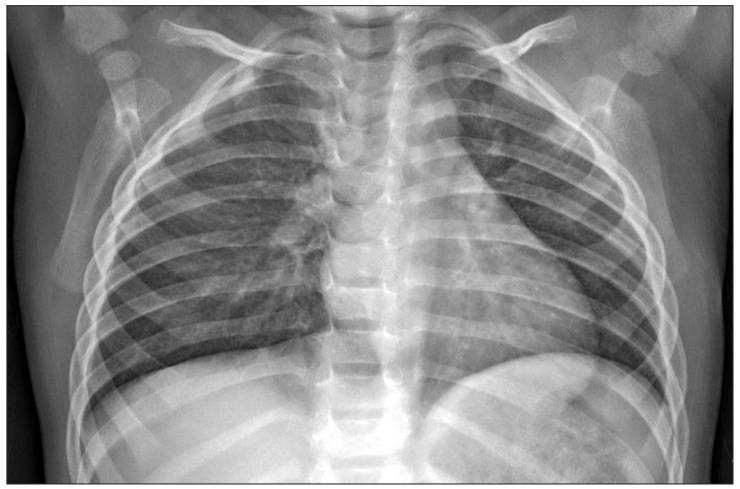User:Z3288196
Lab 4 Online Assessment
- The allantois, identified in the placental cord, is continuous with what anatomical structure?
- Identify the 3 vascular shunts, and their location, in the embryonic circulation.
- Identify the Group project sub-section that you will be researching. (Add to project page and your individual assessment page)
--Z3288196 12:55, 28 July 2011 (EST)
--Mark Hill 09:38, 3 August 2011 (EST) All 3 questions from Lab 1 need to be completed before Lab 2.
Lab 1 Assessment
1. Identify the origin of In Vitro Fertilization and the 2010 nobel prize winner associated with this technique.
In Vitro Fertilization refers to the fertilization of an egg cell outside of the organism, usually in a laboratory environment. Robert G. Edwards was the first to successfully perform this process in 1978, and was awarded the Nobel Prize in Physiology or Medicine in 2010 as recognition for his work in developing this method of fertilization.
2. Identify a recent paper on fertilisation and describe its key findings.
Groeneveld, E.; Broeze, K. A.; Lambers, M. J.; Haapsamo, M.; Dirckx, K.; Schoot, B. C.; Salle, B.; Duvan, C. I. et al. (2011). "Is aspirin effective in women undergoing in vitro fertilization (IVF)? Results from an individual patient data meta-analysis (IPD MA)". Human Reproduction Update 17 (4): 501–509.
The key finding of this paper is that aspirin is not effective in women undergoing IVF. Women who take aspirin after IVF did not show improved pregnancy rates after IVF.
3. Identify 2 congenital anomalies.
- Congenital Diaphragmatic Hernia
- Spina Bifida
--Z3288196 09:23, 4 August 2011 (EST)
Lab 2 Assessment
1. Identify the ZP protein that spermatozoa binds and how is this changed (altered) after fertilization.
Spermatozoa bind to Zona Pellucida Glycoprotein 3 (ZP3). After fertilization has occured, enzymes digest the zona pellucida and spermatozoa are no longer able to bind to ZP3 as it is altered by these digestive enzymes.
2. Identify a review and a research article related to your group topic. (Paste on both group discussion page with signature and on your own page)
The primary journal article I found talks about the expression of the DMD Gene Products in Embryonic Stem Cells, so I'm hoping that this will allow our group to elaborate a bit on the genetic aspects of the development and potential early identification, as symptoms do not usually appear in humans until a few years of age [1]. Also the review article I found refers to two other types of muscular dystrophies as well as DMD (SCARMD, CMD), highlighting many key developments in research. Seem to be very informative, also refers a bit to the importance of animal models in these developments [2].
--Z3288196 12:38, 4 August 2011 (EST)
Lab 3 Assessment
1.What is the maternal dietary requirement for late neural development?
NHRMC Policy (1993) suggests that an intake of 0.4mg-0.5mg of folate is required to reduce incidence of neural tube defects, such as spina bifida and anencephaly, and allow for normal neural development.
--Z3288196 12:35, 11 August 2011 (EST)
2. Upload and post an image.
"Aspiration pneumonia in the child with DiGeorge syndrome -- A case report "
A preoperative chest PA showing a narrowed superior mediastinum suggesting thymic agenesis, apical herniation of the right lung and a resultant left sided buckling of the adjacent trachea air column.
Ji-Young Lee, Yun-Joung Han "Aspiration pneumonia in the child with DiGeorge syndrome -A case report-"
Korean J Anesthesiol. 2011 June; 60(6): 449–452. Published online 2011 June 17. doi: 10.4097/kjae.2011.60.6.449 [3]
This is an open-access article distributed under the terms of the Creative Commons Attribution Non-Commercial License [4], which permits unrestricted non-commercial use, distribution, and reproduction in any medium, provided the original work is properly cited.
--Z3288196 16:13, 17 August 2011 (EST)
Lab 4 Assessment
1. The allantois, identified in the placental cord, is continuous with what anatomical structure?
The allantois is composed of an inner layer of endodermal cells and an outer layer of mesoderm. The inner layer is continuous with the endoderm of the digestive tract and the outer layer is continuous with the splanchnic mesoderm of the embryo. The allantois dilates with development into the allantoic sac and remains connected to the hindgut by the allantoic stalk, which passes through the umbilical cord.
2. Identify the 3 vascular shunts, and their location, in the embryonic circulation.
i) Ductus Arteriosus: Connects the pulmonary artery with the aortic arch. ii) Ductus Venosus: Connects the umbilical and portal veins to the inferior vena cava. iii) Foramen Ovale: Connects the right and left atria.
3. Identify the Group project sub-section that you will be researching. (Add to project page and your individual assessment page)
I am doing the Etiology and Further Research sub-sections in our group project on DiGeorge Syndrome.
Lab 5 Assessment
1. Which side (L/R) is most common for diaphragmatic hernia and why?
The left side is most common for the occurrence of Congenital Diaphragmatic Hernia. Herniation refers to abnormal closure of the pleuroperitoneal foramen. When the pleuroperitoneal folds close the foramen, the right side usually closes first. Hence this increases the likelihood of an opening on the left side through which the viscera of the gut can move in to.
--Z3288196 10:19, 1 September 2011 (EST)
Lab 6 Assessment
1. What week of development do the palatal shelves fuse?
Palatal shelves fuse in week 9
2. What animal model helped elucidate the neural crest origin and migration of cells?
The quail-chick chimera model
3. What abnormality results from neural crest not migrating into the cardiac outflow tract?
Tetralogy of Fallot
--Timothy Ellwood 12:34, 1 September 2011 (EST)
Lab 7 Assessment
1. Are satellite cells (a) necessary for muscle hypertrophy and (b) generally involved in hypertrophy?
a) Satellite cells are not necessary for muscle hypertrophy b) Satellite cells are required for the formation and regeneration of muscle fibers hence they are generally involved in hypertrophy.
2. Why does chronic low frequency stimulation cause a fast to slow fibre type shift?
Chronic low frequency stimulation increases the aerobic capacity of muscle cells in order to resist fatigue.
3. Comment on Trisomy 21 project page.
Peer Review
- I found the introduction rather brief and disjunctive. More elaboration on the history and the nature of the condition would be more informative and possibly allow for a more flowing intro.
- Recent findings subheading is a great idea. However it seems to make more sense that this would be better placed towards the end of the page, as very little information is given about Trisomy 21 prior to this, it might be better understood by the layperson once they have read a little more about the disorder. Also thought the articles could be explained, rather than just using direct quotations from the text. Would be more informative to include the general direction of future research in this subheading as well.
- Karyotype is not explained, only images provided. Greater detail here would make it clearer as to what “Trisomy 21” actually means i.e extra chromosome.
- Associated Abnormalities subheading is extremely brief. I feel that a little more detail here would help.
- The subheading Aneuploidy seems unnecessary, as this has already been explained.
- The screening subheading gives a clear picture of the detection rate of various test, however maybe some more information as to what these tests actually are and how they work could be important.
- Screening by Country subheading seems incomplete.
- The overall flow of the presentation could be improved.
--Z3288196 21:45, 21 September 2011 (EST)

